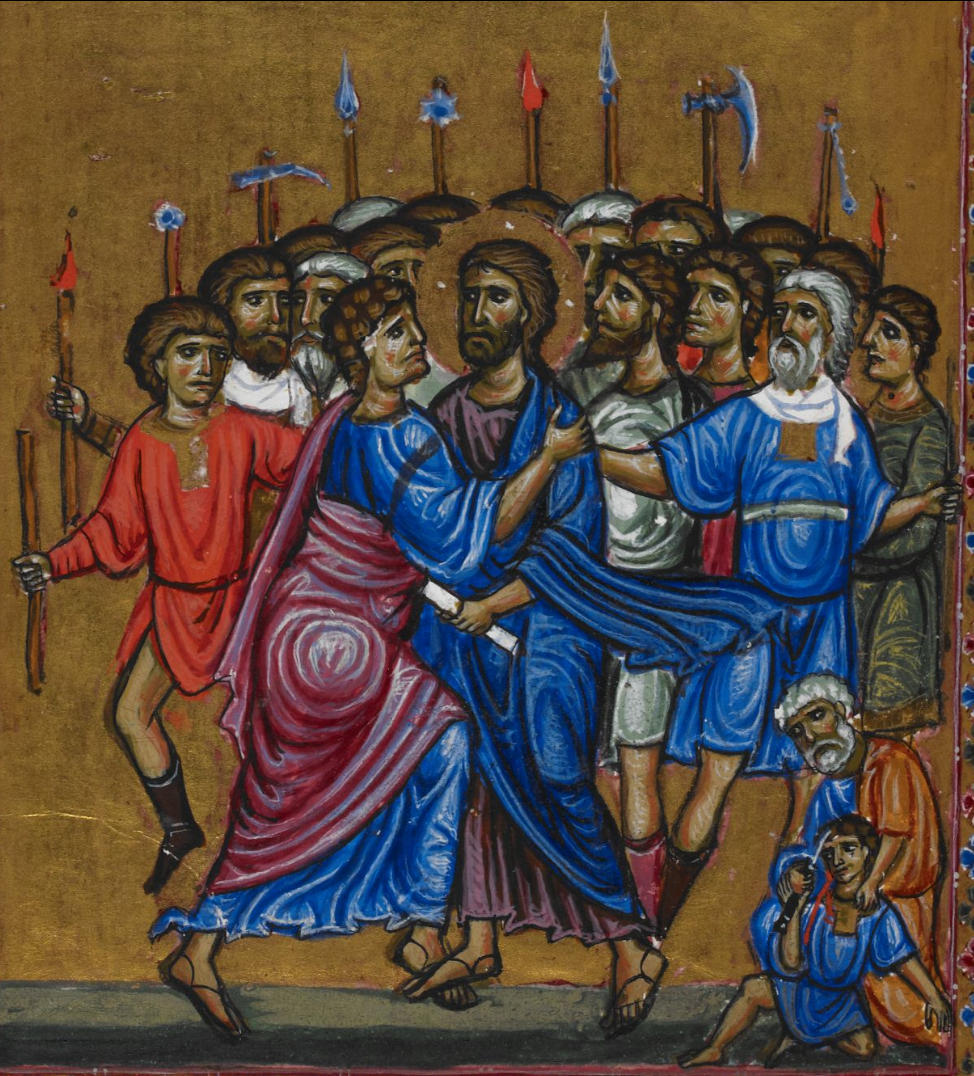
Register a SNAP EBT card with Amazon
The 'Melisende Psalter'
Eastern Mediterranean (Jerusalem) between 1131 and 1143
Betrayal



An extract from Arms and Armour of the Crusading Era, 1050-1350, Western Europe and the Crusader States by David Nicolle
The mixture of extraordinary weapons seen in the 'Garden of Gethsemane' (A-H) reflects Byzantine and Syriac styles. Seen here are a knife or dagger (A), round-headed and spiked maces (B and E) which were as yet rarely seen in the West, spears (D and F), and a long-bladed axe with a hammer at the back (G). Two very unusual infantry weapons are also illustrated. One appears to be a kind of pointed war-hammer (Q), the other a war-flail (H), a weapon which would not become widely popular until the 14th and 15th centuries. It is worth noting the presence of such an infantry weapon, which was most effective against the legs of horses, Crusader Palestine being, of course, an area where the foe consisted primarily of horsemen.
Referenced as figure 268 in The military technology of classical Islam by D Nicolle
268. Manuscript, 'The Betrayal,' Queen Melisande's Psalter, 1131-1143 AD, Crusader States, British Lib., Ms. Egerton 1139 f. 7v, London (Bucht). The basic round-headed dabbūs mace is quite common (Figs. 255, 268, 280 and 394), though clearly this type could also have iron teeth or even same sorts of blades added.10
10. Al Ṭarsūsī, loc. cit.